Seakeeper 3 Operation Manual (90379-4) 3-223-3836 to 3-232-4222
Seakeeper 3 Operation Manual (90379-4) 3-223-3836 to 3-232-4222
1.0 Introduction
Seakeeper 3
Operation Manual
90379, Revision 4
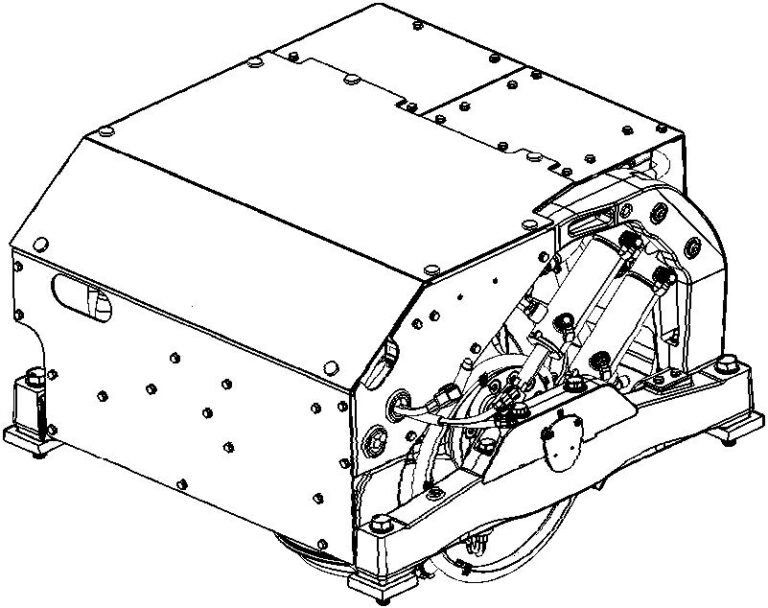
This manual covers the operation of Seakeeper 3 models serial number 3-223-3836 to 3-232-4222.
2.0 System Operation
2.1 Display Screens Overview
2.1.1 Home Screen & Menu
- When 12 VDC power is applied to the Seakeeper, the 5″ Touch Display will initialize and, if installed, the Seakeeper Application on the MFD will initialize. If connecting the 5″ Touch Display to an MFD and the Seakeeper App does not appear on the MFD, please refer to appropriate Technical Bulletin to troubleshoot the Seakeeper 3:
- After the Seakeeper 5″ Touch Display has initialized, the Home Screen will be displayed, as shown below.
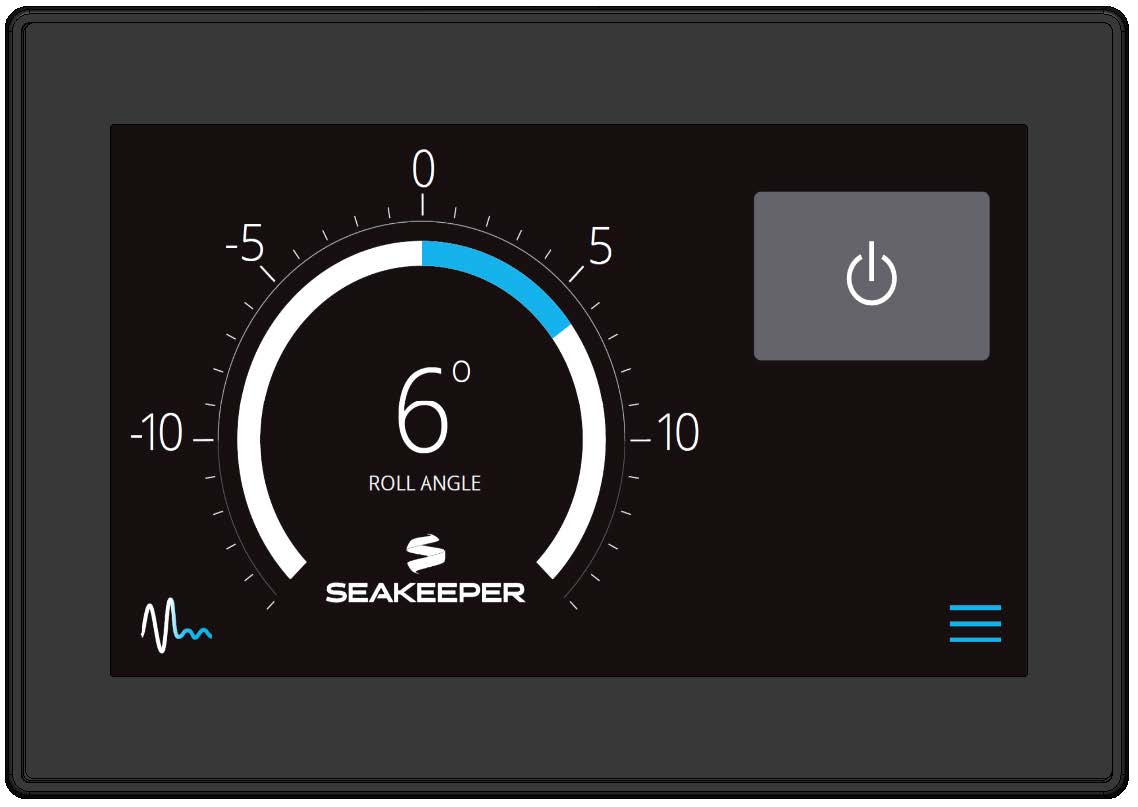
- The Seakeeper can be controlled by either the Seakeeper 5” Touch Display or compatible MFD. Seakeeper POWER button: when pressed, the button will change from grey (Seakeeper Off) to blue (Seakeeper On).

The MFD Application or 5″ Touch Display, POWER button will change from grey (Seakeeper Off) to blue (Seakeeper On)
- Seakeeper STABILIZE button: when pressed after flywheel at sufficient speed, the button will change from grey (Stabilize Off) to blue (Stabilize On) to place the Seakeeper in stabilization mode (UNLOCKED or SEA MODE).
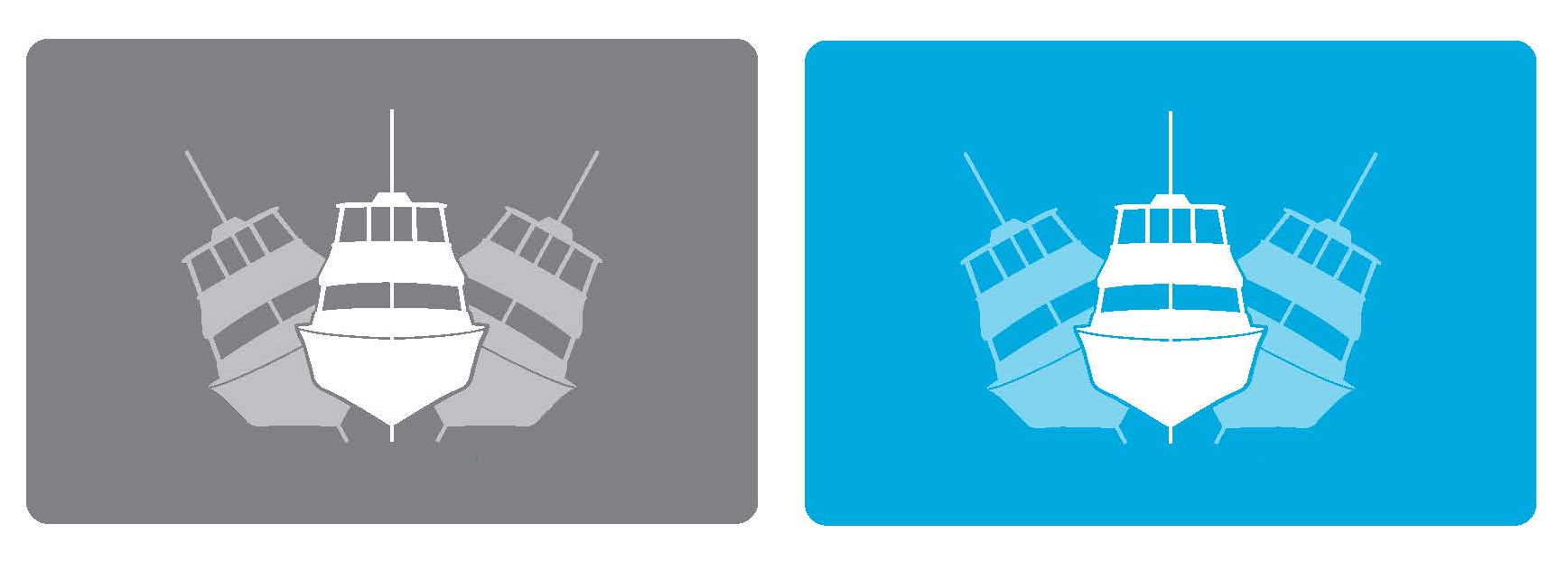
On the MFD Application or 5″ Touch Display, the STABILIZE button will change from grey (Stabilize Off) to blue (Stabilize On)
- On the Application or 5″ Touch Display Home Screen view, these buttons can be pressed to toggle Home Screen views between the Roll Angle Gauge and the Roll Angle Graph as shown below.

- When the MENU button is pressed, the Menu Bar will appear or disappear at the bottom of the screen

- The Menu Bar is used to navigate between pages. From left to right, the available pages are Home, Settings, Information, Service, and Alarm History. The selected page is highlighted in blue on the Menu Bar.

2.1.2 Settings Page
The Settings Page allows the user to adjust their preferences for the display. It can be accessed by pressing the gears ![]() in the menu bar.
in the menu bar.
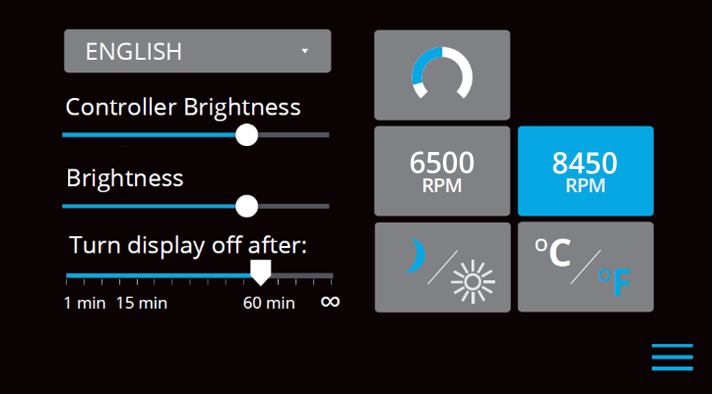
- The language on the Seakeeper Application can be changed by tapping on ENGLISH. A drop-down appears, allowing the desired language to be selected.
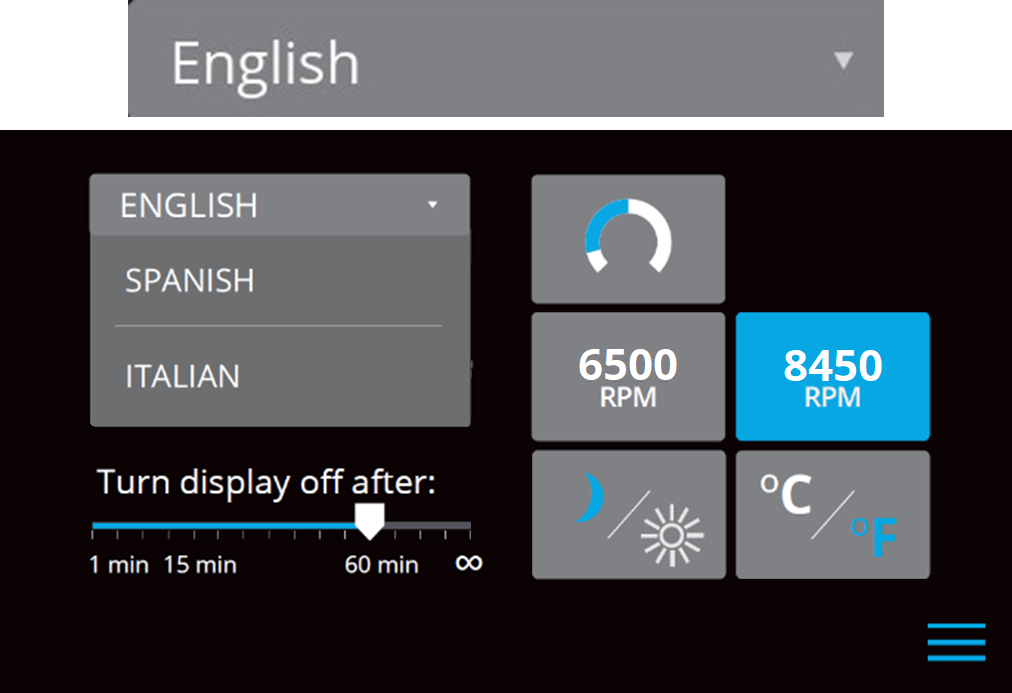
- The brightness of the Seakeeper 5″ Touch Display can be changed.
- To increase or decrease the brightness of the Seakeeper 5” Touch Display, slide the white dot left to decrease brightness and right to increase brightness on the brightness bar, pictured below on the Settings Page.

- On the Seakeeper 5″ Touch Display, adjusting display brightness is achieved by sliding the white dot under the Brightness control left or right.

- On the Seakeeper 5” Touch Display, there is a sleep timer. Adjust the sleep timer from 1 minute to infinite using sleep time slider. Touching the screen will wake the display up after it has gone to sleep. The MFD should be controlled within the MFD’s settings.

- If the Seakeeper is facing the bow of the vessel, the Roll Angle Gauge should show the blue on the left (pictured left). If the Seakeeper is facing the stern of the vessel, you should select the Roll Angle Gauge with the blue on the right (pictured right). A positive roll angle should be displayed when the vessel rolls to starboard.

- Change the speed of the Seakeeper between normal operation and low power operation. Low power mode consumes less power and should generate less noise. The selected speed is colored blue. When power is cycled (or Seakeeper turned Off), this speed will default back to the normal operating speed.

- Change the display between day and night mode. The selected mode is colored blue and to change between day and night mode, press the button.

- Change the units of the temperatures displayed on the Service Page between degrees Celsius and degrees Fahrenheit. The selected units are colored blue and to change between Celsius and Fahrenheit, press the button.

2.1.3 Information Page
- The Information Page
 displays the Seakeeper Model, Serial Number, Software Versions, Run Hours, Sea Hours, and other information. The image below is an example and may not match information details of installed Seakeeper.
displays the Seakeeper Model, Serial Number, Software Versions, Run Hours, Sea Hours, and other information. The image below is an example and may not match information details of installed Seakeeper.
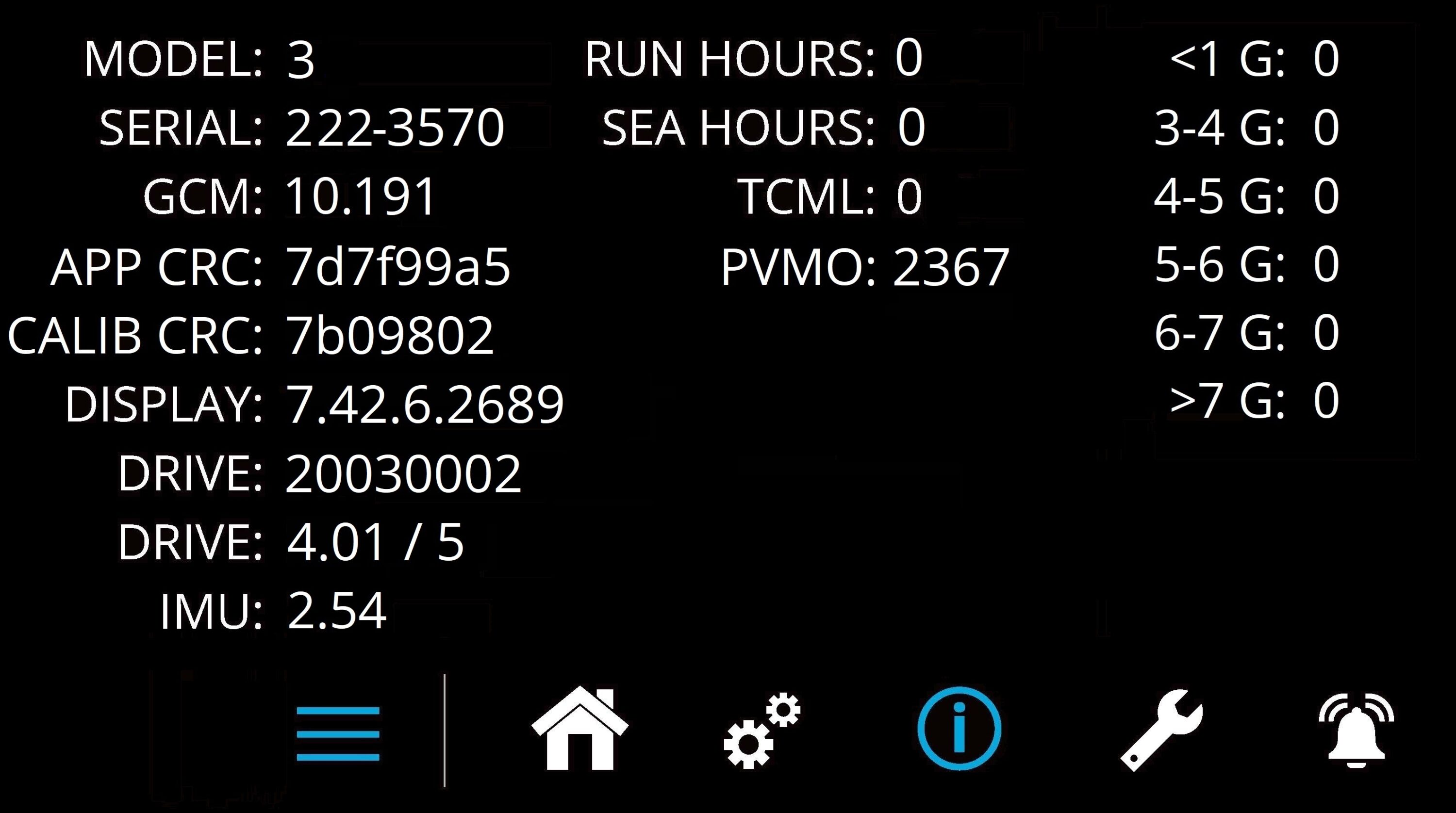
2.1.4 Service Page
- The Service Page
 displays Seakeeper operating information.
displays Seakeeper operating information.
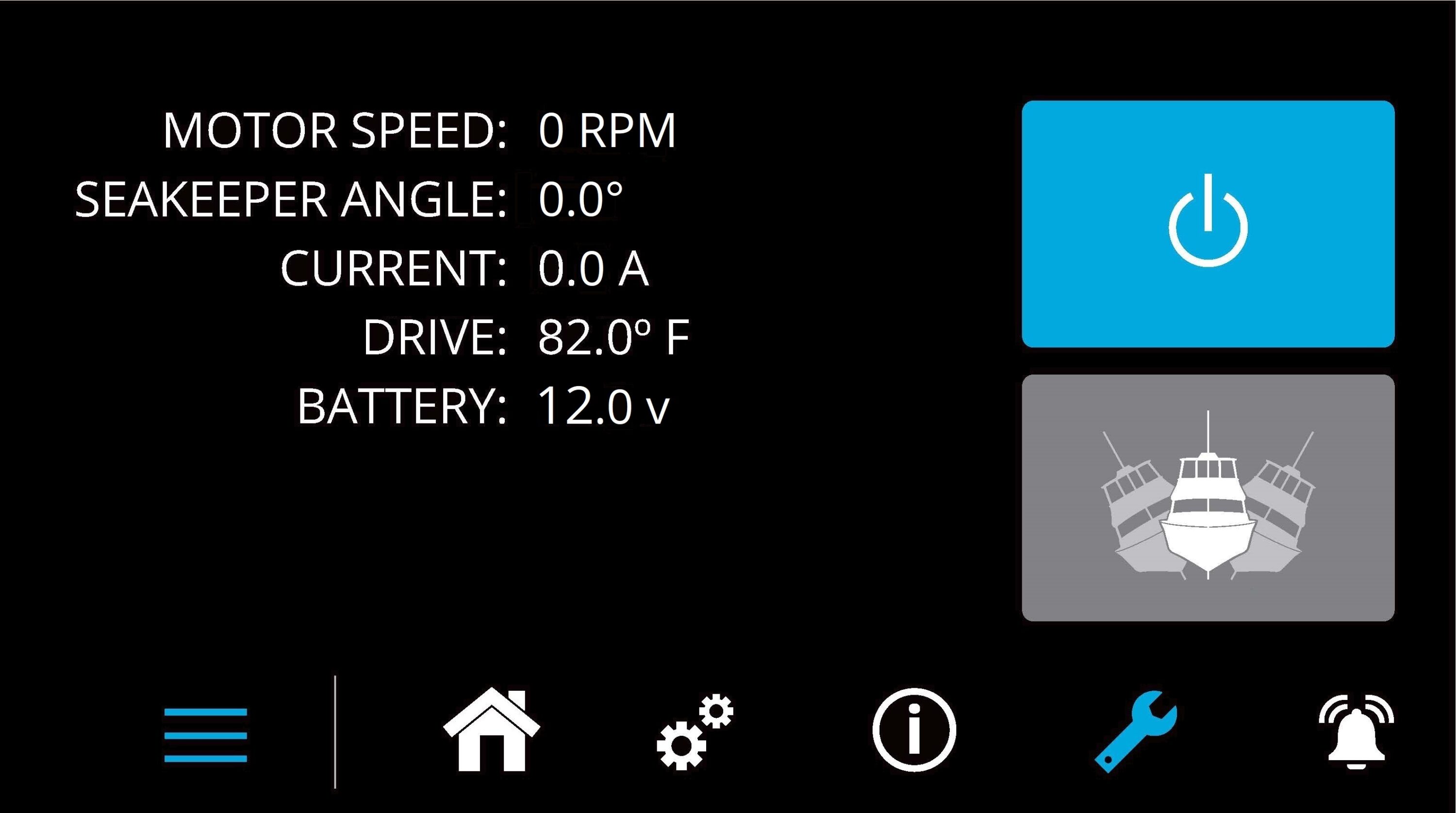
2.1.5 Alarm History Page
- The Alarm History Page
 shows alarms and warnings that have occurred in the past and their associated run hours. The scroll bar on the right is used to move up and down through the list.
shows alarms and warnings that have occurred in the past and their associated run hours. The scroll bar on the right is used to move up and down through the list.
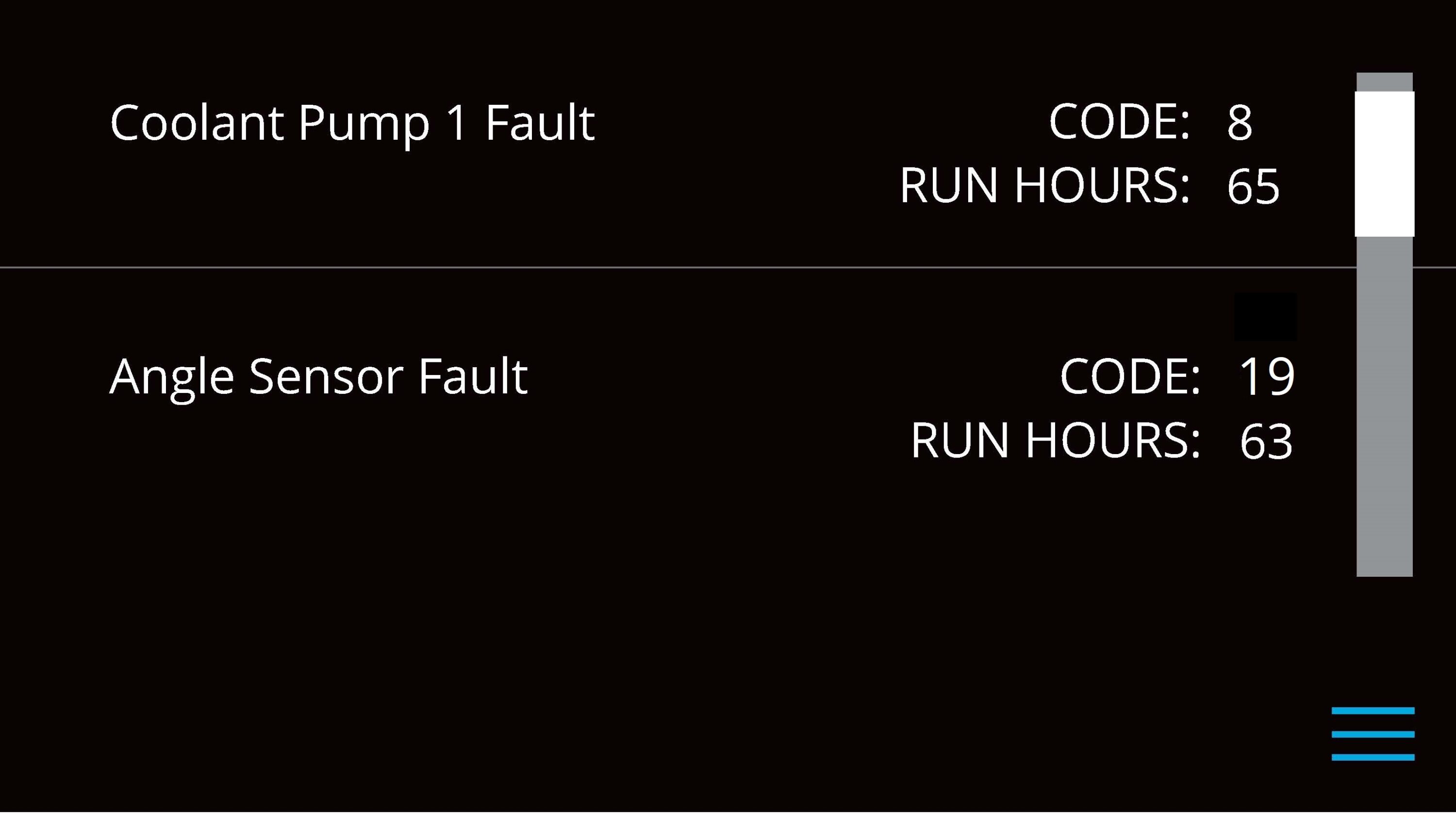
2.2 Start Up
Power On
- Energize Seakeeper 3 Battery Isolation Switch.
- Energize Seakeeper 3 High Current DC Power Supply (12 VDC, 100 A).
- Energize the Seakeeper 3 Low Current Power Input (12 VDC, 15 A).
- Energize 12 VDC Seawater Pump Power Input (If a fuse is supplied as overcurrent protection the pump will energize automatically).
- When the low DC power is turned on, the 5″ Touch Display and/or MFD application will initialize and the Home screen will appear. The Seakeeper 3 can be powered on and controlled by either the Seakeeper Application or the 5″ Touch Display.
- With system energized, check the Seakeeper display for any ALARMS. If there are any ALARMS present, they must be addressed to proceed. Alarms must be acknowledged and reset at the Seakeeper 5″ Touch Display or MFD application.
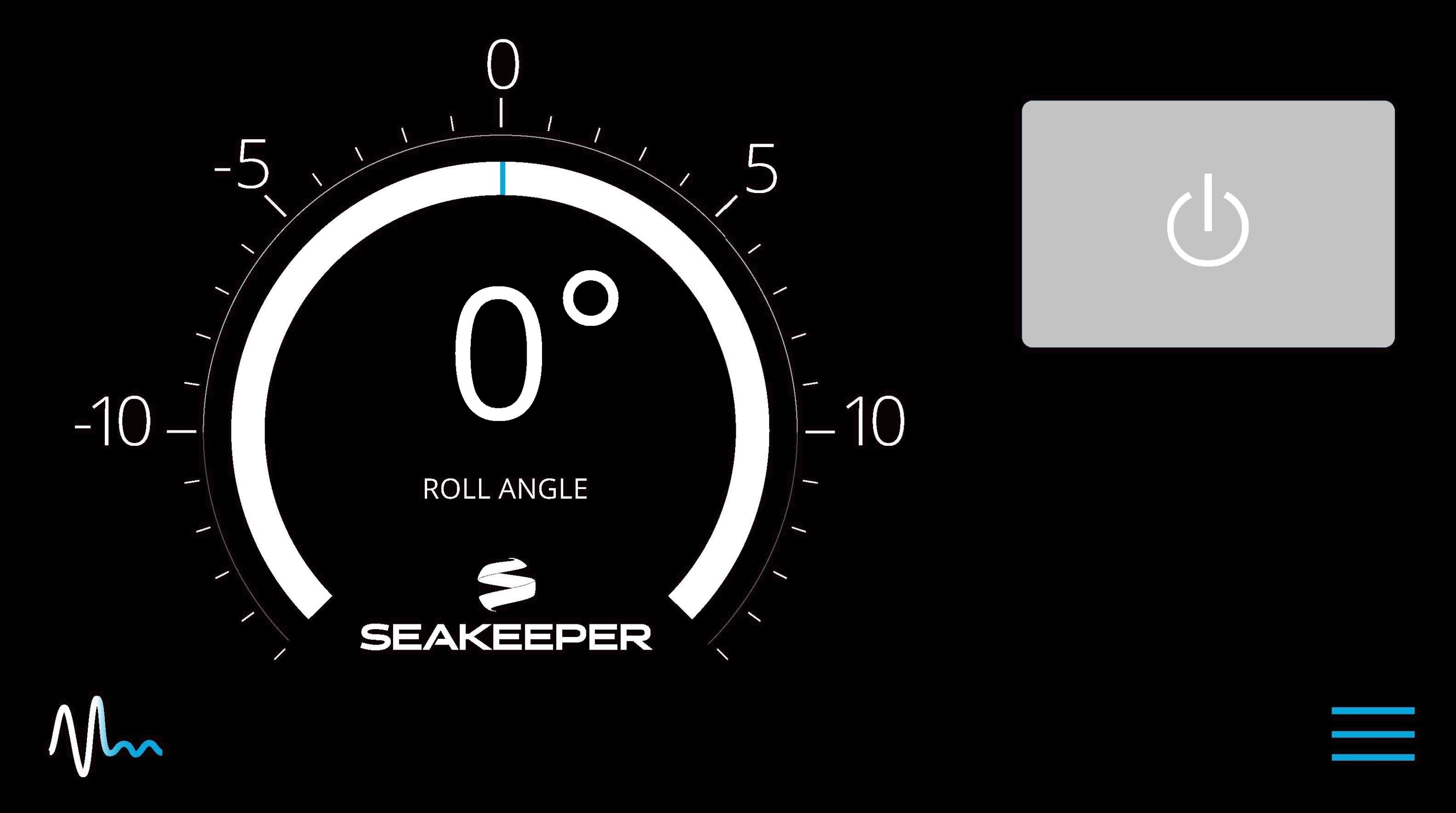
- To turn the Seakeeper on, press the On/Off button, the button will turn blue. The progress bar will appear and indicate how soon the Seakeeper will be available for stabilization. When the Seakeeper is initialized and up to minimum operating speed the Stabilize button will appear on the display or MFD application. At this point, the Seakeeper is available for stabilization.
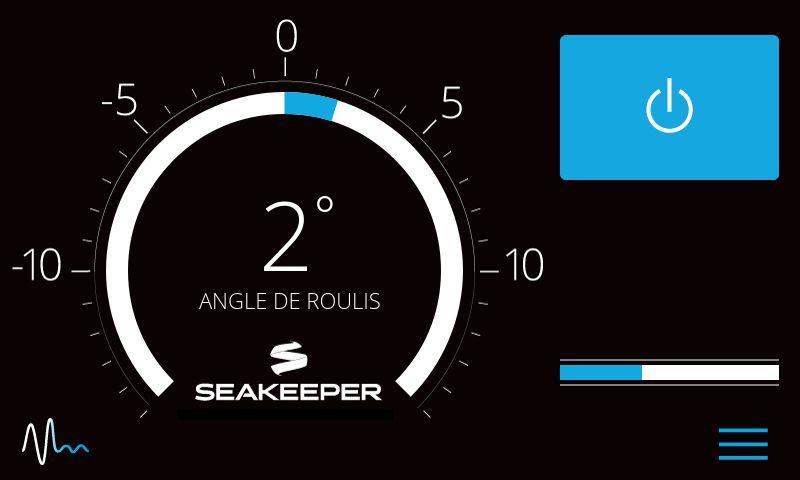
- When the Seakeeper is initialized and up to Stabilization RPM the STABILIZE button will appear on the 5″ Touch Display, and if using the MFD, the STABILIZE button will illuminate blue and pulsate in the Seakeeper Application. At this point, the Seakeeper is available for stabilization by pressing the STABILIZE button.
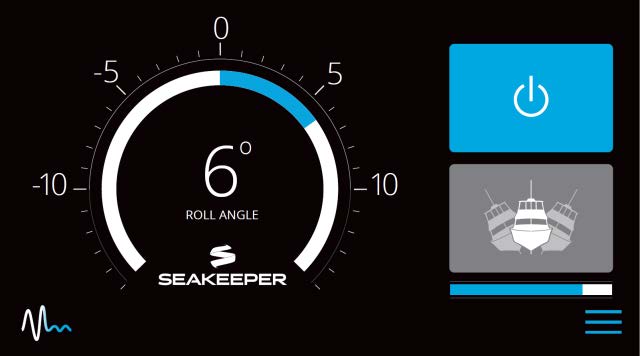
- The progress bar indicating flywheel spool-up will disappear from the display screen once the STABILIZE button is pressed (turns blue). At this point, the Seakeeper has reached its rated operating speed and maximum stabilization is available. If the STABILIZE button has not been pressed (button is gray), pressing the button will turn it blue and stabilization will be provided. The seawater pump will cycle on and off based on the operating temperature of the Seakeeper 3.

2.3 Stabilization
To stabilize the vessel after the Seakeeper is On and the flywheel is above the minimum stabilization RPM, press the STABILIZE button. The button will turn blue indicating that the Seakeeper is stabilizing the roll motion.
Boat operators are advised that the Seakeeper’s sole function is to dampen a boat’s cyclic roll motions. The Seakeeper is not, and is not intended to be, a substitute for adequate hull stability about the pitch, roll and yaw axes and the Seakeeper is not designed to prevent any instability due to improper boat operation, including, without limitation, any aggressive maneuvers at high speed. During aggressive maneuvers at high speed, the Seakeeper outputs a constant pitch moment which can create a small bow-down or bow-up trim change.
Improper boat operation including, without limitation, aggressive maneuvers at high speed can result in the boat becoming unstable. If you intend to operate the boat in such a manner, you should lock the Seakeeper in the vertical position before operating the boat in that manner. This is easily accomplished by turning the boat to starboard at slow speed in the Stabilize mode. After turning to starboard for 5 seconds, turn the Stabilize mode off while continuing to turn and then go to the Service Page on the display and confirm the Gyro Angle is within +10 degrees of 0 degrees.

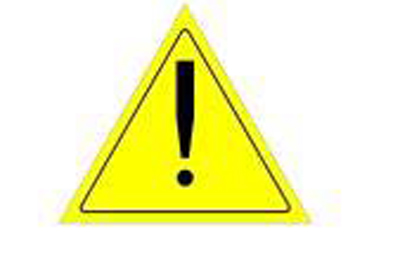
If it is necessary to shut off power to the flywheel motor and slow the flywheel for any reason, press Seakeeper On/Off button; the button will turn grey and the Stabilize button will disappear, indicating the command has been accepted. It takes approximately 8+ hours for the speed to slow down to 0 RPM.

If it is necessary to stop Seakeeper motion for any reason, press the Stabilize button. The Stabilize button will turn grey indicating that the Seakeeper is locked. Never attempt to work on the Seakeeper until the flywheel has stopped spinning. In the event that the brake system has automatically locked the Seakeeper due to an alarm or failure, no attempt should be made to bypass the alarm or automatic lock.
2.4 Normal Shut Down
The Seakeeper should be shut down when stabilization is no longer required. This maximizes the longevity of the Seakeeper.
- Press the Seakeeper POWER button. The POWER button will turn grey. The Seakeeper will discontinue stabilization and the flywheel will start coasting.

- Once the vessel is secured in the slip, switch the high current and low current DC power to the Seakeeper off. The flywheel will continue to spool down to 0 RPM. This can take 8+ hours from full speed. When the flywheel has stopped spinning, 0 RPM will appear on the service screen.
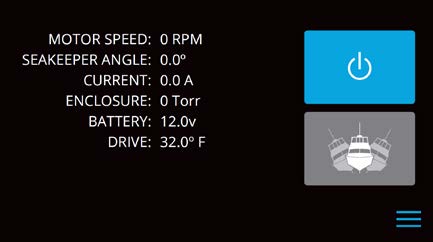

The Seakeeper should be stopped when stabilization is no longer required. Once the vessel is secured in the slip, the high and low current DC power to the Seakeeper should be switched to the Off position. The Seakeeper will continue to spool down to 0 RPM. No cooling is required during this time. Note Seakeeper will take 8+ hours to coast down to 0 RPM from full speed.
Note: The seawater pump may run for up to 5 minutes after the Seakeeper is switched off and is coasting (with low current DC power applied).
3.0 Power Failures, Alarms, and Troubleshooting
3.1 Power Failures
In the event of a power failure, the brake automatically locks the Seakeeper so it cannot generate anti-rolling torque loads. When a power failure occurs, it is important to identify the three sources of power to the Seakeeper 3:
- 12 VDC high current powers the Motor Drive.
- 12 VDC low current powers the Seakeeper control electronics and 5″ Touch Display.
- SW Pump 12 VDC input powers the seawater cooling pump.
These are supplied on Conductors 1 and 2, Cable 7, and Cable 8 which are shown on Drawing No. 90377 – Seakeeper 3 Cable Block Diagram.
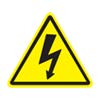
The Motor Connections should not be touched when the Seakeeper is Powered on, or the motor is running. This voltage hazard exists even if the flywheel is coasting down, and the supply voltage has been shut off.
The flywheel must be at Zero (0) RPM and DC input power disconnected for at least 10 minutes prior to any service work on the Seakeeper.
3.2 12 VDC High Current Failure
If the 12 VDC high current is disconnected during operation, a notification screen will indicate “High Current DC Voltage Low”. If the failure is not corrected within two minutes, a “High Current DC Voltage Low” alarm will occur. The brake will lock.
- Verify the boat’s circuit breaker or fuse supplying +12 VDC high current has not tripped or blown.
- When +12 VDC high current is restored, the display will power up, the Splash Screen will appear, and then the Home Screen will appear.
- Press Power On/Off button
 . The progress bar will appear and indicate flywheel speed. When the flywheel is at minimum operating speed, the Stabilize button will appear so stabilization can be turned on. This may take up to 30 minutes, depending on the speed of the flywheel when the +12 VDC high current is turned back on.
. The progress bar will appear and indicate flywheel speed. When the flywheel is at minimum operating speed, the Stabilize button will appear so stabilization can be turned on. This may take up to 30 minutes, depending on the speed of the flywheel when the +12 VDC high current is turned back on.
3.3 12 VDC Low Current or SW Pump Power Failure
If the 12 VDC low current is disconnected during operation, the display will be blank, flywheel speed will decrease, and the Seakeeper will be turned off (no stabilization).
- Verify the boat’s circuit breaker or fuse supplying +12 VDC low current has not tripped or blown.
- When +12 VDC low current is restored, the display will power up, the Splash Screen will appear, and then the Home Screen will appear.
- Press Power On/Off button
 . The progress bar will appear and indicate flywheel speed. When the flywheel is at minimum operating speed, the Stabilize button will appear so stabilization can be turned on. This may take up to 30 minutes, depending on the speed of the flywheel when the +12 VDC low current is turned back on.
. The progress bar will appear and indicate flywheel speed. When the flywheel is at minimum operating speed, the Stabilize button will appear so stabilization can be turned on. This may take up to 30 minutes, depending on the speed of the flywheel when the +12 VDC low current is turned back on.
If SW Pump input 12 VDC power is disconnected during operation, the SW Pump will fail to provide cooling seawater flow when required. The resulting high temperatures would result in the Seakeeper being turned off (no stabilization).
- Verify the boat’s circuit breaker or fuse supplying +12 VDC SW Pump power has not tripped or blown.
- When +12 VDC SW Pump power is restored, reset any alarm and continue Seakeeper operation.
3.4 Alarms
Sensors, alarms, and shutdowns are provided to allow unattended operation. Sensors measure drive temperatures, gimbal angle, brake pressure, and vessel motion. The Seakeeper controller sends sensor values and alarm information to the display and locks the brake and shuts down the motor drive in the event of an alarm condition. Seakeeper operating history during faults or alarms is recorded in the controller’s memory for subsequent recall if service is needed. Seakeeper and Seakeeper Dealers may access the Seakeeper’s software to gather run hours, bearing loading, and hull slamming information.

The operator should physically examine the Seakeeper following an alarm. Continuing to reset alarms without service intervention can result in damage or personnel injury.
NOTE: the Seakeeper 5” Touch Display or the MFD to identify and address the alarm. The alarm will not clear until the operator presses the Reset Alarm button, and the alarm condition is no longer present. The operator can then press the POWER button again to resume Seakeeper operation.
- A view of a typical Alarm screen.
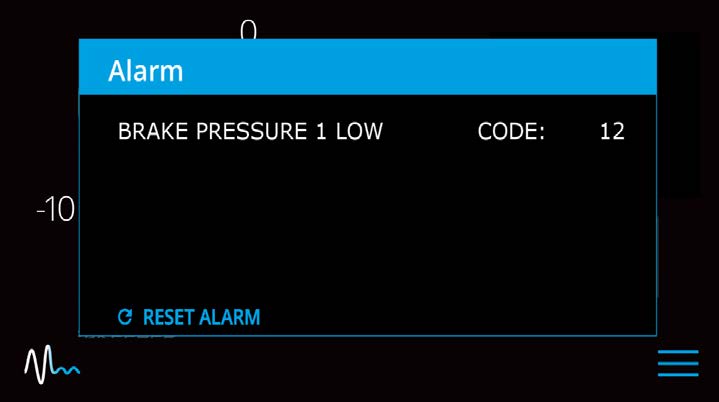
- To reset the alarm, press the Reset Alarm button:

3.5 Alarm History
The ALARM HISTORY page on the Seakeeper application shows the recent alarms and warnings. Alarms trigger a pop-up message to be displayed on the display or Seakeeper App. Warnings will be listed in the alarm history but do not affect Seakeeper operation. The alarms and warnings are in chronological order starting with the most recent. Warnings included in the history page are for issues that do not affect gyro operation.
Press the Menu button ![]() to show the page options and then the ALARM button
to show the page options and then the ALARM button ![]() to show alarm history.
to show alarm history.

4.0 Maintenance
4.1 Maintenance Introduction
Seakeeper recommends a regular inspection interval and scheduled maintenance to keep the Seakeeper 3 running trouble-free.
If the Seakeeper is installed in a wet space, efforts should be made to keep the Seakeeper free of salt residue from either condensation or direct exposure to salt spray. If exposed, a regular wipe down with mild soap and water with a rinse will help limit corrosion and keep the Seakeeper assembly in good cosmetic condition. Refer to Seakeeper Care Article for details.
If any components of the Seakeeper or its sub-systems will be exposed to environmental temperatures where winterization is necessary for storage, reference Seakeeper Winterization Article.
The Seakeeper comes standard with sealant and thread locker on applicable fasteners. When reinstalling all fasteners, use thread locker (Loctite 243 or equivalent) and sealant unless otherwise specified.
Reference Documents:
- TB-90426 – Seakeeper Scheduled Maintenance Plan
- TB-90747 – Seakeeper Annual Inspection
- Seakeeper Winterization Article
- Seakeeper Care Article

Due to remote start capabilities of MFDs, ENSURE power removed from Seakeeper and flywheel at zero RPM at display/MFD app before removing covers.
Hydraulic Hand Pump Kit is required for servicing the brake. Pressure should NOT be relieved unless this tool is available.
4.2 Scheduled Maintenance Table
The following pages contain the scheduled maintenance table organized by systems: Mechanical, Hydraulic, Cooling, and Electrical. Recommended scheduled maintenance is not covered under warranty.
- Scheduled Maintenance should be performed by a Seakeeper trained factory technician or trained technician within the Seakeeper Dealer network. Find a local Dealer on our website at www.seakeeper.com/find-us/.
- A Seakeeper technician or Dealer is required to perform a brake service and to replace brake bushings or other brake components. This requires a complete flush, bleed, purge and pressurization of the closed hydraulic system.
- Scheduled Maintenance and the replacement of ‘wear’ items are not covered by the www.seakeeper.com/extended-warranty/recreation-warranty/.
| System / Component | Task | Interval | Parts / Special Tools |
|---|---|---|---|
| MECHANICAL / FOUNDATION | |||
| All Mounting Hardware | Inspect | 12 Months | |
| BRAKE SYSTEM | |||
| Hydraulic Manifold Components & Fittings | Inspect for leaks | 12 Months or 1000 Run-Hours | |
| Hydraulic Cylinders & Hoses | Inspect for leaks | 12 Months or 1000 Run-Hours | Hydraulic Hand Pump Kit |
| Hydraulic Accumulators | Replace | 2000 Run-Hours/As Needed | |
| Hydraulic Oil | Flush & Bleed | 1000 Run-Hours | |
| Brake Bushings | Inspect | 12 Months or 1000 Run-Hours | |
| Brake Bushings | Replace | 2000 Run-Hours/As Needed | |
| COOLING SYSTEM | |||
| Heat exchanger | Inspect for leaks | 12 Months or 1000 Run-Hours | |
| Heat Exchanger | Replace | 2000 Run-Hours/As Needed | |
| Heat Exchanger | Clean/Descale | 12 Months or 1000 Run-Hours | |
| Coolant Level-Glycol | Inspect/Fill | 12 Months or 1000 Run-Hours | Anti-freeze – 50/50 Ethylene Glycol mix. |
| Seawater Flow | Check seawater flow | 12 Months or 1000 Run-Hours | |
| Coolant Hoses | Inspect for leaks | 12 Months or 1000 Run-Hours | |
| Coolant Glycol | Inspect/Replace | 12 Months or 1000 Run-Hours | Anti-freeze – 50/50 Ethylene Glycol mix. |
| ELECTRICAL | |||
| Electrical Connections, Cables, and Components | Inspect for damage | 12 Months |
5.0 Warranty, Limit of Liability, Property Rights
5.1 Warranty
The complete Seakeeper warranty details may be found on the Seakeeper website www.seakeeper.com.
Seakeeper Recreational Limited Warranty Policy
SEAKEEPER warrants that the Goods sold hereunder are free from defects in material and workmanship. This warranty is for the following period, whichever occurs first:
- 36 months (3 years) from the date of shipment from SEAKEEPER factory.
- 24 months (2 years) from date the product was put into service, which shall conclusively be presumed to be the date of sale of a vessel, on which a SEAKEEPER product is installed, to a retail customer or date put into service on an existing vessel (refit).
- Or, 2,000 (two thousand) operating SEA hours of use, subject to verification and confirmation by SEAKEEPER, INC.
All Seakeeper Models
BUYER IS SOLELY RESPONSIBLE FOR ENSURING THAT GOODS ARE PROPERLY LOCATED, INSTALLED AND MAINTAINED ON VESSEL’S HULL FOUNDATION WITH AN ADEQUATE MARGIN OF SAFETY, INCLUDING, BUT NOT LIMITED TO, COMPLIANCE WITH ANY SPECIFIED LOAD-BEARING REQUIREMENTS.
This warranty does not cover normal wear of the following components or the costs associated with maintenance, repair or replacement:
- Surface Corrosion (Cosmetic) on any component due to exposure
- Heat Exchanger
- Brake Bushings
- Isolation Bushings or Isolation Mounts
- Normal preventive and scheduled maintenance and component inspections/replacements as specified in the SEAKEEPER, INC., Operation Manuals and any other Maintenance Schedule documentation.
This express warranty is in lieu of and excludes: ALL OTHER WARRANTIES, EXPRESSED OR IMPLIED, BY OPERATION OF LAW OR OTHERWISE INCLUDING WARRANTIES OF MERCHANTABILITY OR FITNESS FOR A PARTICULAR PURPOSE (WHETHER KNOWN TO SELLER OR NOT), AND ALL OTHER SUCH WARRANTIES ARE HEREBY EXPRESSLY DISCLAIMED BY SELLER AND WAIVED BY CUSTOMER/END USER. SEAKEEPER, INC. SHALL IN NO EVENT BE LIABLE TO ANY SPECIAL, DIRECT, INDIRECT, INCIDENTAL OR CONSEQUENTIAL DAMAGES FOR BREACH OF ANY WARRANTY OR OTHER OBLIGATION ARISING OUT OF THE SALE OF THE PRODUCTS, OR FROM THE USE OF THE PRODUCTS OR ANY INABILITY TO USE THE PRODUCTS.
Written notice of claimed defects shall have been given to SEAKEEPER within the Warranty Period, and within thirty (30) days from the date any such defect is first discovered. The Goods or parts claimed to be defective must be returned to SEAKEEPER, accompanied by a Return Authorization (RA) issued by SEAKEEPER’s facility responsible for supplying Goods, with transportation prepaid by Buyer/User, with written specifications of the claimed defect.
If a warranty claim is valid, SEAKEEPER, INC. will repair or replace the Product, or part of the Product, proven to be defective, at its sole discretion, in a timeframe provided by SEAKEEPER, INC., on a reasonable best effort basis.
Under no circumstances shall SEAKEEPER be liable for removal of SEAKEEPER’s Goods from Buyer’s/User’s equipment or re-installation into Buyer’s/User’s equipment. No person including any agent, distributor, or representative of SEAKEEPER is authorized to make any representation or warranty on behalf of SEAKEEPER concerning any Goods manufactured by SEAKEEPER.
Warranty Activation
A Warranty Registration must be fully completed and sent to SEAKEEPER, INC., for review, approval and registration upon delivery of the vessel to the first retail customer. Warranty registration and expiration date confirmation can be achieved by providing SEAKEEPER, INC., a copy of the original bill of sale, purchase agreement, Owner’s name, address and SEAKEEPER Stabilizer Serial Number along with current RUN / SEA hours to SEAKEEPER’s warranty registration department within thirty (30) days of purchase. For removal of doubt, it is clarified that the activation date shall in no event affect the warranty period set forth herein.
“Owner” is defined as the first retail customer (purchaser), or subsequent customer (by transfer), of the SEAKEEPER Product as identified in SEAKEEPER warranty registration(s).
5.2 Limitation of Liability
NOTWITHSTANDING ANYTHING TO THE CONTRARY, SEAKEEPER SHALL NOT BE LIABLE FOR ANY SPECIAL, INCIDENTAL, INDIRECT OR CONSEQUENTIAL DAMAGES INCLUDING BUT NOT LIMITED TO LOST PROFITS ARISING OUT OF THE PERFORMANCE, DELAYED PERFORMANCE OR BREACH OF PERFORMANCE OF THIS ORDER REGARDLESS WHETHER SUCH LIABILITY BE CLAIMED IN CONTRACT, EQUITY, TORT OR OTHERWISE. SEAKEEPER’S OBLIGATION IS LIMITED SOLELY TO REPAIRING OR REPLACING (AT ITS OPTION AND AS SET FORTH IN SECTION 5), AT ITS APPROVED REPAIR FACILITY, ANY GOODS OR PARTS WHICH PROVE TO SEAKEEPER’S SATISFACTION TO BE DEFECTIVE AS A RESULT OF DEFECTIVE MATERIALS OR WORKMANSHIP, IN ACCORDANCE WITH SEAKEEPER’S STATED WARRANTY. IN NO EVENT SHALL SEAKEEPER’S LIABILITY EXCEED THE TOTAL PURCHASE PRICE SET FORTH IN THIS ORDER.
5.3 Property Rights
Except where otherwise expressly agreed, all patterns, tools, jigs and fixtures, drawings, designs, software and other materials and data developed, fabricated by Seakeeper shall be and shall remain Seakeeper‘s property. Except as specifically provided for in the order, Buyer shall have no right in any technical data, Intellectual Property Rights, and computer software associated with the order. Buyer shall not use or permit the use of the Goods that in any way could result in the disclosure of Seakeeper‘s proprietary information.
6.0 Specifications and Summary
| Seakeeper 3 | |
|---|---|
| Rated RPM | 8,450 RPM |
| Angular Momentum at Rated RPM | 3,000 N-m-s |
| Anti-Rolling Torque at Rated RPM | 7,853 N-m |
| Spool-up Time to Rated Speed | 50 minutes (8,450 RPM) |
| Spool-up Time to Stabilization | 36 minutes (7,185 RPM) |
| Spool-up Power DC Motor | 900 Watts Max |
| Operating Power DC (Sea state dependent) | 400-900 Watts |
| Voltage DC Input | 12 VDC @ 85 Amps (Spool-up) |
| Seawater Supply to Heat Exchanger | 2 GPM (7.6 LPM) minimum 6 GPM (22.7 LPM) maximum |
| Ambient Air Temperature | 32˚ – 140˚F (0 – 60˚C) |
| Weight | 550 lbs (249 kg) |
| Envelope Dimensions | 26.8 L x 27 W x 23.1 H (inches) 0.68 L x 0.69 W x 0.587 H (meters) |
| Noise Output | < 72 dBC at 1 meter |

Arrangement
The Seakeeper 3 consists of the Flywheel, Enclosure, Foundation, Electronics, Brake, Cooling, and Cover Subsystems.
Installation Location
The Seakeeper is a torque device and does not have to be installed in a specific hull location or on the centerline. However, the Seakeeper should not be installed forward of the longitudinal center of gravity to minimize high acceleration loading due to hull/wave impacts during operation at high speed or in large waves.
Mounting Dimensions
See Drawing No. 90374 – Seakeeper 3 Bolt-In Installation Details.
Loads
The installer is responsible for designing the foundation to which the Seakeeper is attached and for ensuring that this foundation can safely transfer the concentrated Seakeeper loads from the frame to the adjacent hull structure. Loads that the Seakeeper imposes on the hull structure are explained on Drawing No. 90374 – Seakeeper 3 Bolt-In Installation Details; these loads do NOT include vessel motion accelerations, such as vertical slam loads which can be high for higher speed vessels.
Cooling
The Seakeeper bearings, Motor Drive Box, and hydraulic manifold are cooled by a closed water / glycol mix cooling loop that incorporates a seawater heat exchanger. The installer is responsible for providing 2 – 6 GPM (7.6 – 22.7 LPM) raw water at ambient sea temperature and a maximum pressure of 20 psi (1.4 bar) to the heat exchanger.
Electrical
The installer is responsible for supplying 12 VDC at 100 A service to the Motor Drive Box, 12 VDC at 15 A service to the Seakeeper Control System, and 12 VDC at 15 A service to the Seawater Pump. Separate circuit breakers should be used for each Motor Drive Box in multiple Seakeeper installations. Similarly, separate circuit breakers should be used for each Seakeeper Control System and Seawater Pump in multiple Seakeeper installations.
Operator Controls
A 5″ Touch Display is used to start, operate, monitor, and shutdown the Seakeeper locally. A Multi-Function Display may be used for connection to Seakeeper from helm.
Performance
Reduction of boat roll is a function of the boat’s displacement, transverse metacentric height (GMT) and hull damping as well as the operating conditions (speed and heading with respect to waves) and sea state. The Seakeeper controller regulates the active hydraulic brake to ensure the Seakeeper’s anti-roll torque is maximized regardless of hull characteristics or operating conditions.
Alarm and Monitoring
Sensors, alarms and shutdowns are provided to allow unattended operation. Sensors measure Seakeeper and drive temperatures, vacuum pressure, gimbal angle, brake pressure, and ship motion. The Seakeeper controller sends sensor values and alarm information to the display and also locks the brake and shuts down the motor drive in the event of an alarm condition. Seakeeper operating history during faults or alarms is recorded in the controller’s memory for subsequent recall if service is needed. Seakeeper may access the Seakeeper’s software to gather run hours, bearing loading, and hull slamming information.
Safety
The brake automatically locks the Seakeeper so it cannot generate excessive anti-rolling torque loads in the event of a system fault or alarm, loss of electrical power or loss of brake pressure. The brake can be locked from the Display or by shutting off AC and DC power at the supply breakers.
7.0 Revision History
| REVISION | DESCRIPTION | DATE |
| 4 | Cooling water system update. Added precautions. Minor edits. | 22FEB2023 |